(AUSTRALIA)
Australian Broadcasting Corporation - ABC [Sydney, Australia]
September 26, 2021
By Rachael Brown
The coronial inquest into the unsolved murder of Melbourne woman Maria James has homed in on two suspects — a Catholic priest and a convicted killer.
Key points:
- Former detective Ron Iddles told the inquest Father Anthony Bongiorno had the motive, means and opportunity to murder Maria James
- The brother of Vicki Cleary, who was killed by Peter Keogh, said police did not follow up on tip-offs naming Keogh in connection to Ms James’s murder
- An expert exhibit tracker said the loss of crucial exhibits from the scene of the crime still keeps him up at night
Out of the six persons of interest, testimony at the inquest this past week focused on Father Anthony Bongiorno and on Peter Keogh, a man responsible for the killing of another Melbourne woman.
But as testimony is heard about the two men and their potential connection to the 1980 murder of Ms James, there are still tough questions about how the evidence that could have provided answers was handled by Victoria Police.
Crucial exhibits disappeared in the 1980s and one, a missing quilt, has only turned up recently. Victoria Police’s expert exhibit tracker has revealed he has been kept up at night by what happened to the evidence.
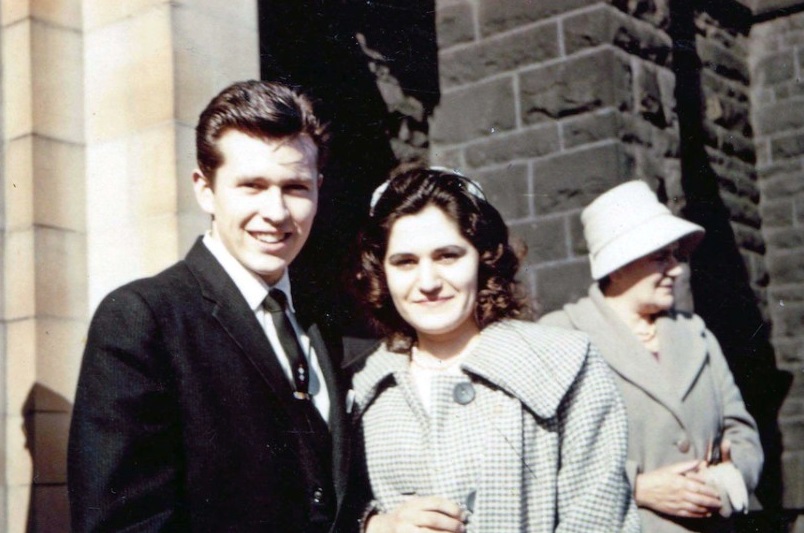
A priest with motive and means
Veteran homicide detective Ron Iddles told the inquest that in his mind, the strongest suspect is the late priest, Father Bongiorno.
The Victorian Coroners Court heard Father Bongiorno had been sexually abusing Maria James’s son Adam, and she’d planned to confront the parish on the day she was murdered.
The murder was Mr Iddles’s first homicide case and it is the one that’s gnawed at him since he left the police force in 2014.
It was Mr Iddles who took Adam James’s statement in 2013 about the priest’s abuse. He told the inquest Father Bongiorno had a strong motive to commit murder.
“Adam heard his mum talking to the presbytery, he thought she was talking to Mr Bongiorno … then on my leaving the Homicide Squad, an electrician had just come forward saying that he saw a priest covered in blood,” he told the inquest.
“Then you have a new witness … seeing Mr Bongiorno at the door of the [book] shop at 11:00am on the day of the murder.
“[Father Sean] O’Connell is the alibi, in 1977 he’s charged with harbouring an armed robber … in 1990 he’s charged with fraud.
“I think he [Father Bongiorno] has got the motive, I think he’s got the opportunity, I think he’s got the means.”
Father Bongiorno died in 2002.
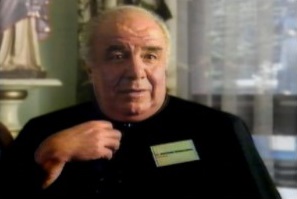
Persons of interest
Six persons of interest have been named in the inquest:
Peter Keogh
- Nominated as a possible suspect in 1980 and 1982 by people who knew him
- Was again nominated as a possible suspect after he stabbed and killed his former partner, Vicki Cleary, in August 1987
Peco Macevski
- The inquest heard he was having an affair with Maria James between April and June 1980
- The only person of interest still alive
Father Anthony Bongiorno
- Not initially considered a suspect
- In 2013, Adam James revealed Father Bongiorno had been molesting him in the weeks leading up to the murder
Father Thomas O’Keeffe
- Adam James says Father O’Keeffe also molested him the weekend before his mother’s murder
- Was never canvassed by police
Lyle Perkins
- No known connection to Ms James
- No known criminal history at the time, but soon after the murder, was convicted for assaulting two female hitchhikers he picked up in August 1980
Mario Falcucci
- Had argued with Maria around 9:00am the day of her murder, because she refused to buy certain magazines from him
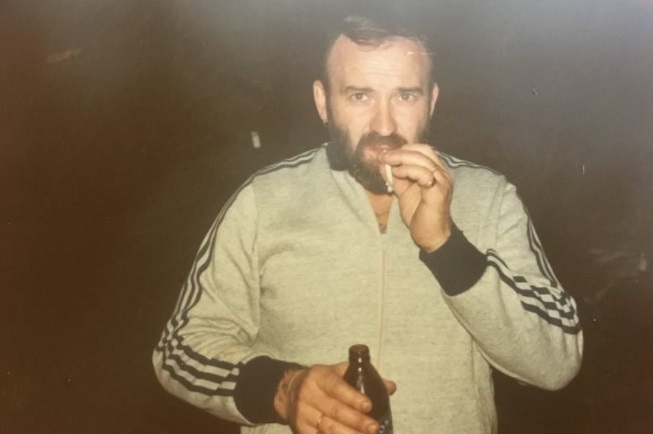
As for the other priest in the frame, Father Thomas O’Keeffe, who Adam James said also abused him, Mr Iddles doesn’t rate him as strong a suspect.
Mr Iddles told the inquest Father O’Keeffe was responsible for sexual assaults on young boys, many of whom had relayed his propensity for violence.
“There are victims who talk about him brandishing knives, having firearms … horrific things [done] to young boys,” Mr Iddles said.
“[But] I don’t think you’d get him in the same category [of suspect] … you don’t have evidence of witnesses seeing him outside the shop … [or being] covered in blood.”
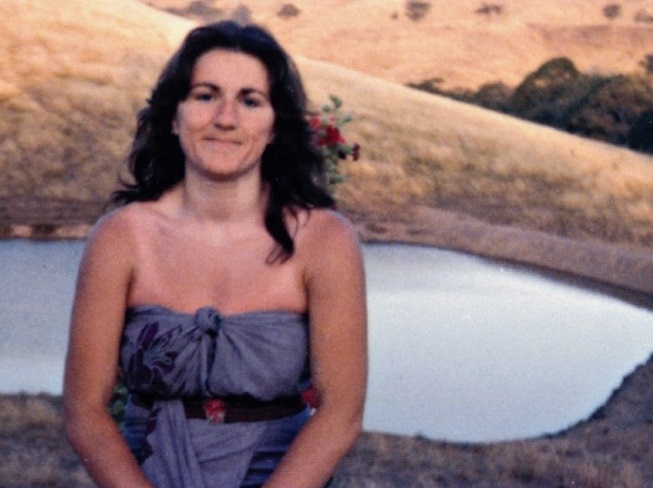
The chilling threat from a convicted killer
The inquest’s focus also turned to convicted killer Peter Keogh, who stabbed Melbourne woman Vicki Cleary to death seven years later in 1987.
The Coroners Court heard Keogh’s alibi for the day of Maria James’s murder was his then-girlfriend, Judy McNulty.
But the inquest heard that her sisters later called CrimeStoppers to nominate Keogh as the killer.
Phil Cleary, Ms Cleary’s brother and now an anti-violence campaigner, told the inquest police never followed this up properly.
“If the sisters of the alibi are saying he’s the killer, there’s got to be some substance to this … it doesn’t prove Keogh is the murderer, but it proves he was worth a good look.”
The inquest also heard that Keogh’s parole officer, Margaret Hobbs, suspected him. She asked a colleague to call the Homicide Squad to pass on her concerns.
The inquest has heard that Keogh made a chilling threat to Ms Cleary, which referenced the murder of Ms James.
“I’ll do the same to you, that I did to the bookshop woman.”
There’s no known motive for Keogh, nor any connection that’s been found to Maria James.
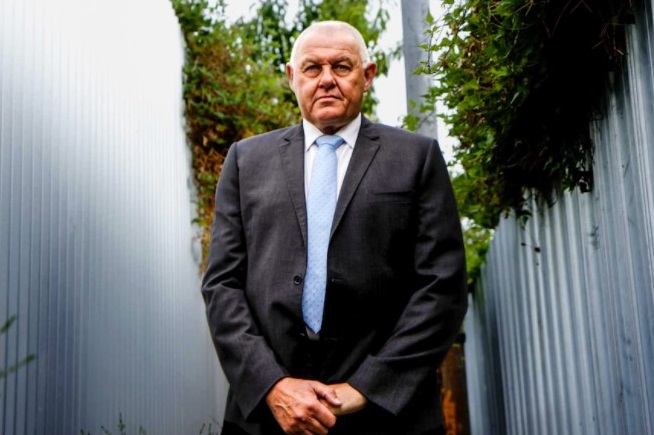
Police exhibit guru ‘consumed’ by the case
Victoria Police exhibit tracker Sergeant Rod Jones was asked to do an audit of Maria James’s exhibits.
He is the guru in this field, the man best placed to work out how Ms James’s clothes and pillow-slips from the scene of the murder might have disappeared.
To make matters worse, a rogue pillow found its way into her exhibits, leading the investigation astray.
But unfortunately, it’s a mystery to him too.
“This has consumed me,” he told the inquest.
“Honestly, I wake in the night thinking about it.
“I don’t know how pillows appear to have ended up in a bag labelled quilt, nor do I know how a pillow or pillows apparently from another investigation were stored against the Maria James investigation.”
Sergeant Jones was not responsible for the exhibits at the time but tried to present a timeline of what happened to them as best as he could.
Timeline
Sergeant Jones gave the inquest this timeline of how the exhibits were handled:
- 1980 — Clothes disappear
“Collected and retained by SC Collins, 17/6/80”. Crime scene examiner Terrence Collins puts Maria James’s bloodied clothes into what was colloquially called a “stink room”, to dry out before forensic testing. They’re never seen again.
- 1981 — Pillow-slips disappear (from pillows that lay at Ms James’s head and feet)
“Direct to SC Collins from C Smyth on 11 Aug 1981 at 8:50am” — Is the last entry regarding the pillow-slips. The pillows make it back into the police storeroom in November 1982. The slips never do.
- Some time after 1984 — Rogue pillow added to exhibits
Noel McCoy is stabbed in his bedroom in Rosanna in 1975. Somehow his bloodied pillow is put in with Maria James’s exhibits.
Sergeant Jones thinks this happened some time between 1984 and 1999; most likely, either in 1994/1995 during an exhibits relocation, or in 1999 during an exhibits audit.
- 2001-2003 — Exhibits taken for forensics testing
A mistake at the Victoria Police Forensic Services Centre (VPFSC) cripples the investigation for the next 14 years.
The McCoy pillow is chosen for DNA testing (it still has its pillow-slip, so biologist Nigel Hall thinks it has a better chance of yielding a DNA profile than the other two pillows in the bag without pillow-slips). Mr Hall finds a male DNA profile, which police believe belongs to Ms James’s killer. Police use this sample to rule out suspects — wrongly — until 2017.
The pillows were in a bag labelled “quilts”. It is unclear where the actual quilt is between 2001 and 2004.
- 2010 — Exhibits audit
An audit reveals two exhibit bags labelled “quilt”. One containing the quilt. One containing pillows.
The auditor emails Mr Iddles: “Looks like VPFSC has interpreted an exhibit item as a quilt rather than pillows.”
- April 2017 — DNA bungle discovered
Victoria Police realise the pillow purporting to hold the DNA of Maria James’s killer is actually from the Noel McCoy crime scene. All suspects are back in the frame.
- June 2021 — Quilt found
Sergeant Jones says the quilt dropped off computerised databases between 2015 and 2012. Despite this, he’s confident it was in a storeroom. The only period he can’t account for the quilt’s whereabouts is from 2001 to 2004.
- Sept 2021 — New Maria James inquest begins
His evidence painted a messy picture. Exhibits disappearing, one added, one turning up again.
He told the inquest he doesn’t think Ms James’s clothes or pillow-slips will show up. He thinks they’ve probably been destroyed, but that their certificates of destruction might also have been destroyed.
Counsel assisting the coroner Sharon Lacy suggested the litany of errors was unprecedented.
“Now, not raising a conspiracy theory but … do you have any other cases in which there are — through five different causes at five different points in time — errors of that magnitude?” she asked.
“Not to my knowledge,” Sergeant Jones replied.
“They’re very unusual.”
Ms Lacy pressed on.
“It simply seems extraordinary, and I’d expect that Adam and Mark James would want to know how it could be that not one, but five errors, that have significantly impacted on them finding an answer as to who killed their mum … could’ve happened in one case.”
Sergeant Jones replied: “It is bizarre. It is unusual, yes.”
But for a man so meticulous about his work, Sergeant Jones said it wouldn’t happen nowadays, not on his watch.
“I’m very proud of management of the exhibits and that appals me that there’s a lack of accountability if you like.”
The molecule of life that could help solve Maria’s death
The Victorian Coroners Court heard tiny glimmers of hope might lie in two exhibits: a pillow, and hairs on a bed quilt.
One pillow has yielded a partial, mixed DNA profile — that is, some DNA from Ms James, some from an unknown male.
One sample left the door open slightly for it to be from convicted killer Peter Keogh, but one in every second person would also record this same result.
This male profile on the pillow has not yet been compared against the remaining two persons of interest, Father Bongiorno and Father Thomas O’Keeffe.
Former detective Ron Iddles told the inquest he’d like to see Father Bongiorno’s DNA compared to the male DNA found on Maria James’ pillow.
“I agree it should be done, if it can be done”
What can be tested right now, however, are hairs found on Maria James’s bed quilt.
Molecular biologist Dr Dadna Hartman, from the Victorian Institute of Forensic Medicine, told the inquest that a familial DNA sample can be used to do mitochondrial DNA testing.
Which means police can use a sample from Father Bongiorno’s sister.
Victoria Police covertly obtained a sample from her in 2014, and should still have it.
Dr Hartman told the inquest that as things stand now, this type of testing might be this case’s last shot.
“Other than the mitochondrial DNA testing that I’ve suggested for the hair samples, I believe that everything that’s been done recently … is all that we could hope to do with the current methodologies.”
